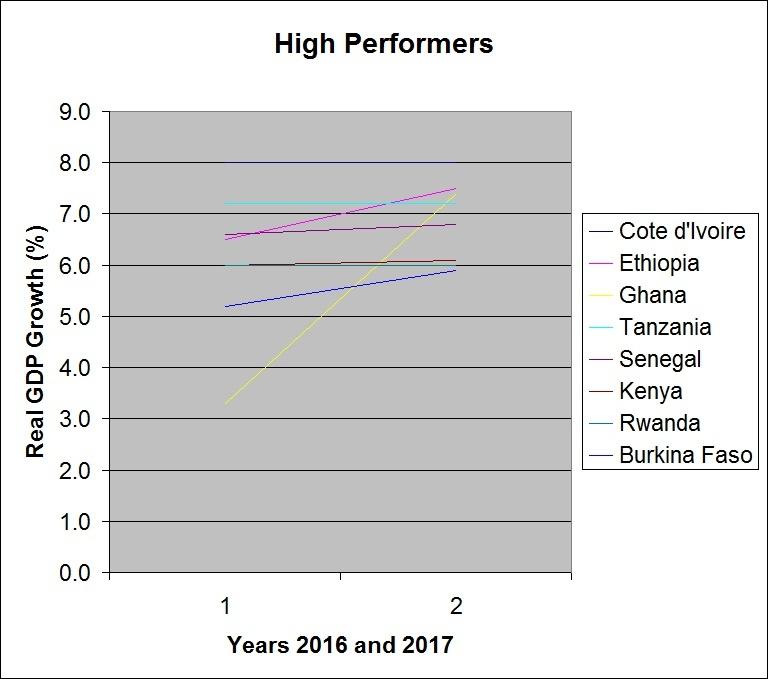Page 1 of 2African Review looks at how each African economies rate against one another and how the continents economic diversity affects each economy differently
Sub-Saharan Africa enjoyed a decade of GDP growth averaging at 5.7 per cent, per year until 2014. However, the sharp down turn in the three largest economies, Nigeria, South Africa and Angola, has largely been the story told across the continent. However, the rest of sub-Saharan Africa, according to the IMF, grew at around 4.7 and 3.9 per cent in 2015 and 2016 respectively. Therefore, the media's headlines of "slow sub-Saharan growth" is largely unfounded across most of the continent. This is largely down to continuing diversification and good governance.
This report will give a breakdown of the three groups of sub-Saharan countries in order to assess the growth of each country over the last years. All data in the graphs is from World Bank and the IMF regional economic outlook, October 2016

High performing countries
There has been some excellent growth among these eight nations in the last two years. Most of non-resource intensive economies representing around half of the sub-Saharan African region, led by Cote d'Ivoire, Ghana, Senegal, Ethiopia, Kenya and Tanzania are projected to record the world's highest growth in 2017, driven by improved competitiveness, private consumption, high infrastructure investment and greater diversification





































